BlogRSS
Venus in Feathers: Boas of Paradise
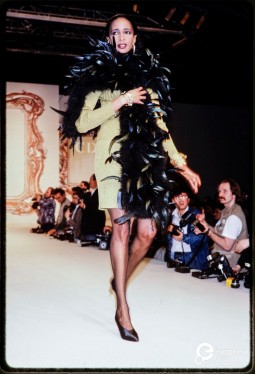
There are materials that alone can give an aura of preciousness to the garments or accessories they are part of. This is true for beads and jewels, but also for fur and, above all, feathers, whose very nature is able to turn the ordinary into something astonishing.
The Brides of Greece and Cyprus at the Leventis Municipal Museum
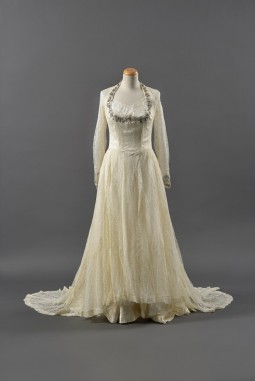
A new exhibition brings together over two centuries of bridal costumes from the collections of the Leventis Municipal Museum of Nicosia and of the Peloponnesian Folklore Foundation of Nafplion.
Valentino Garavani

Standing out for his elegant and charming creations, Valentino Garavani, known to all simply as Valentino, has established himself as one of the top designers of Italian couture.
Born in Voghera, Italy, in May 1932, Valentino debuted early in fashion; in fact, he started very young asDocumenting TheArts+: Interview with IUAV and POLITECNICO DI MILANO students

Today we present the second round of interviews to the students who took part to the workshop THEARTS+. Here are the answers Giulia Profeta from Politecnico di Milano and Eugenia Ioppolo from IUAV University of Venice gave us.
Europeana Fashion: First and foremost, can you tell us something about yourself? How and why did you become involved with fashion?
Giulia: Right after high school, I was very confused: I was thinking about engineering, economic, medicine, all scientific fields which were close to my training, but that did not really interest me or made me curious. Then, in between the proposals for study at Politecnico di Milano, I found the design courses, particularly for fashion and, although I was a bit scared, I decided to give it a try, and I don’t regret it. I got my BA in fashion design with specialization in knitwear and now, always at the Politecnico di Milano, I am attending a Master in Design for the fashion industry. The course has quite a wide span, from projects for sportswear brands such as Decathlon and SLAM, which are aimed at exploring new technologies, to communication skills and marketing.
Eugenia: I do not know exactly how I came to study fashion: it has always been a field that has intrigued me. I enrolled in the degree ‘Fashion and costume science” at the Sapienza. There I fell in love for the very relationship between art and fashion, and how this relationship has developed through history and according to different personalities. Two years ago I joined the graduate program in “Visual arts and fashion” at IUAV of Venice. There I learned to juggle theoretical courses – which cover both the fashion that art – and practical workshops – sewing, design, knitwear. At the beginning of the second year I left Venice for an exchange at Stockholm University, where I followed some courses focused specifically on research. I’m currently writing my thesis.
EF: Tell us your experience: how was the workshop? What are the main features of the project developed by your group?
G: We had three days of intensive work with specialists who shared with us their professional skills. The app developed by my group is called VISUALIZE and can be defined as a library that offers daily digital images from different categories of interest: the user can choose whether to deepen the proposed theme, leafing through the tunnel and save his or her favorite pictures, or change theme. Surely there are things that can be improved, but in its simplicity I personally find it very useful; in fact, thanks to the possibility to create folders, the user can save and move on to review the contents: this is very important for a designer or a creative, because it is easy to select images to realize mood boards, concept, or perhaps find inspiration for the prints.
E: The workshop was quite challenging and interesting. The first day we were introduced to the Europeana project. We started developing some individual projects, related to the Europeana Fashion contents. Then six projects were selected, we got divided into groups and each group had to develop one project and create a business plan. Finally, we presented our projects in front of the board that was responsible of selecting the ‘winning’ idea. The project chosen was ‘Fantasia’, the one I have been working on with two other girls: Tetiana Baran and Victoria Dubinina. The work to which I took part was born as ‘Dressformer’, which was a free software that would allow to create new styles of clothes. But this project has since proved very weak and so we have continued to develop it and change it until we got to ‘Fantasia’. Dedicated especially to illustrators and fashion designers and interior designers, the program was aimed at creating new patterns. Clients, with a search of images made available through Europeana, could decide which ones to use and could modify them – using a special design, a color, combining multiple images – to create unique patterns. All of this, while remaining connected, thus directly creating an online portfolio, and especially having the program always at disposal.
EF: We are curious about your general impressions on the experience: did you like? Did you find this useful? You can use it in your path of personal study?
G: My impression is definitely positive: it was set in a very professional manner, and although we had not experience as app designers, organizers and experts have been helpful in explaining very simply how this sector works. I found particularly useful and interesting the explanation about how to make a business plan, and the final confrontation with the board; I believe that a good designer should always keep in mind the market and the limits of his or her projects.
E: In general I found the experience quite positive, even though a bit tiring: times to think of new and interesting ideas and turn them into projects were very tight. The part that I found most interesting, however difficult because I have no basis in economics, has been that relating to marketing. Thinking and creating a business plan of the project and above all making a good presentation allowed me to get involved and especially to acquire the knowledge that I missed. In particular, having to work in a group with other people who I did not know, with different paths of study and ways of thinking has enriched me so much.
EF: As a fashion student, how do you think you might find useful products such as those developed by the various working groups?
G: I think that Fantasia, the winning project, could be a great starting point to experience digital content. It is very simple and I think it can be both useful for creatives and designers, and fun for the general public, since it can turn the experience into a game for users who are not working in the fashion industry.
EF: Do you use digital platforms in your creative practice? If so, what and how you use them?
G: I mainly use Pinterest for my research, and to create moodboards. I visit quite often online shopping sites of the brands that I believe may be the main competitors for the type of project I am working on, to ‘spy’ what the market offers and to differentiate myself. Since I believe that in the fashion communication is very important, I often visit a site called ISUU, which collects magazines and publications.
E: In my career as a fashion student, I used a lot databases like Pinterest and Tumblr for the visual research, especially for labs and to develop my collections. I also find very interesting the work done by Academia.edu, a website for researchers, dedicated to the sharing of scientific publications and essays.
The bias cut – a hint of elegance
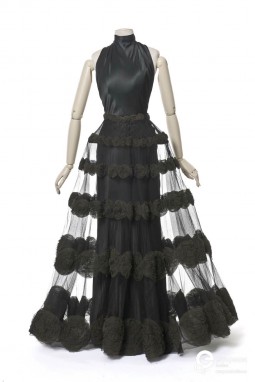
A bias cut garment is essentially a dress whose fabric is cut diagonally. The result of this operation gives these garments a very peculiar look: they tend to cling to a woman’s curves with a delicate, graceful - and sensual - flow.
The bias-cut technique, still in use in contemporary pattern making, initially appeared in the work of the Parisian couturièreDocumenting TheArts+: Interview with POLIMODA students
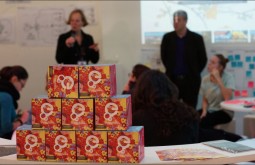
From the 19th to the 23rd of October, within the context of the Frankfurt Book Fair, Europeana hosted a series of workshops in the context of the Arts Plus (http://theartsplus.com/). Europeana Fashion selected participants amongst three leading fashion school belonging to its network: Polimoda, IUAV University of Venice and Politecnico di Milano. The students took part in different workshops, led by the Spanish commons organisation Platoniq and by the international consultancy company Media Deals, playing with the data hold in the Europeana collections and thinking creatively on how to use them for their projects. The various activities involved developing business models and learning how to best present and promote the projects, as well as finalise them and pitch them to investors.
We have asked some of the participants to share their thoughts on the experience. Here is what Rachele and Elizaveta, two participants from Polimoda, told us.
Europeana Fashion: First and foremost, can you tell us something about yourself? How and why did you become involved with fashion?
Rachele: After attending high school in my hometown, Cecina, I decided I to enroll at POLIMODA because I needed a change: I was looking for something that could take me away from normality. Then I started the Fashion Design course, which is mainly focused on techniques and practical knowledge: models, graphics and a smattering of business. I enjoyed the course above all because it allowed me the freedom to choose how to shape and develop my own project.
Elizaveta: I am currently studying at the Fashion Design course at Polimoda, an institution that I am very happy to have chosen: the environment is conducive to any kind of creative development and the teachers are always available. The courses are mostly practical, and give you the right preparation to develop a project in its entirety. There has never been a concrete reason why I chose to study fashion: maybe just the fact that I have always seen fashion as an environment where creativity has not limits. Then, in terms of possibilities, it is a field that will never die: people will always need to dress.
EF: Tell us your experience: how was the workshop? What are the main features of the project developed by your group?
R: The title of the project my group developed was “Art out loud!”: an app that would make the visual arts accessible for people not able to see. The idea was that the app could ‘show’ digital material through the comments posted by users in audio note communicate their impressions in front of a work of art. The main objection we got from the jury was that the app was completely free.
E: With my group we have developed an App with the same layout of Tinder, but instead of having to “match” with other people, you have the match with art. The app allows you to easily save images and study your favorite works. It was aimed at making the use of digital data easier and more palatable for anyone.
EF: We are curious about your general impressions on the experience: did you like? Did you find this useful? You can use it in your path of personal study?
R: The workshop came a bit as a surprise, since I had never before come across online archives; in fact, my training does not currently include courses on digital knowledge and archives. The process was quite standard: we divided into groups, in which we discussed ideas about what kind of App we wanted to develop. Among the many ideas, we voted the one that felt more doable, and then got re-divided into new groups, based on the ideas that had received more votes. Into these new groups, we developed the idea and prepared a business plan. All this was then put into a powerpoint presentation we used to pitch our project to potential investors. Even though it was the first time I worked with digital data sharing and working with digital objects, I think that, thanks to my preparation and the courses I follow at Polimoda, I had the right tools to approach the team work. Overall, I haven’t found the experience particularly new compared to what my school offers.
E: Although it had been difficult, at the beginning, to cope with the intricate organisation of such a complex event, I learned interesting things and had an experience that I think will be useful in the future.
EF: As a fashion student, how do you think you might find useful products such as those developed by the various working groups?
E: I believe that not all the projects developed by the groups are closely useful to the field of fashion; still, doing a lot of research is definitely helpful to have a more comfortable and convenient access to all the content of Europeana Fashion.
EF: Do you use digital platforms in your creative practice? If so, what and how you use them?
R: I don’t, but it was indeed very interesting to get to know Europeana Fashion and its platform.
E: I use a lot especially Pinterest, for more targeted research; Tumblr, for inspiration, mood and to see a bit of trends. Then there are about thirty less-known websites that I found while looking for different ideas and I like to use. I also check fashion magazines’ websites, they are really interesting.
Weawing desire: the alluring fabrics of Bianchini-Férier
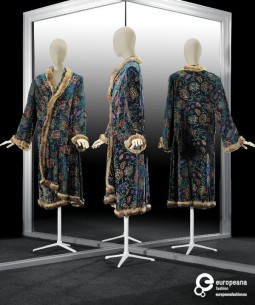
Fabric are a mindful connection of threads, composed in almost infinite combinations. Warp and weft can be woven in an almost infinite combinations, with the only exception that at least once, threads must pick. The ability to weave and to connect fabrics, and therefore people and situations, characterized the fascinating history of Bianchini-Férier.
Europeana Fashion Focus: Robe Du Soir by Madeleine Vionnet, 1925
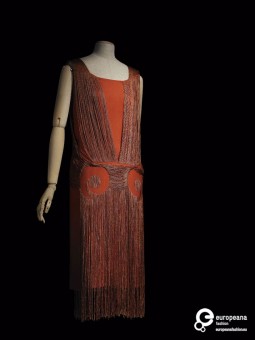
The evening dress is made of red silk crepe and decorated with silk threads arranged on top of the basis to create a motif. It was designed by Madeleine Vionnet in 1925.
Dazzling Couture: Lesage’s Embroideries
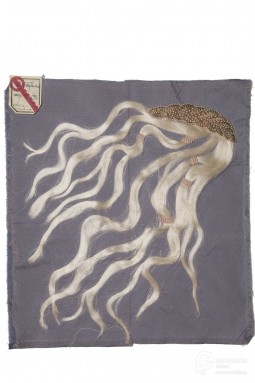
‘‘Embroidery is to haute couture what fireworks are to Bastille Day.’ This was the statement François Lesage made when asked about the relationship between couture and his own practice.
When it comes to embroidery, Lesage is probably the first name that comes to mind.Throughout his career, he has collaborated with the most iconic maisons, establishing his reputation of highly-skilled maker and talented creator – or anticipator – of the atmospheres of French couture, and linking is name to the extraordinary details of gowns and accessories. François Lesage was born ‘in the business’: in 1924 his parents had in fact taken over the workshop of the embroiderer Michonet, famous for working, above all, with all the biggest names of French couture. After serving as apprentice in the family business, right at the end of World War II, François Lesage opened a Studio on Sunset Boulevard in 1948, working with costume designers in the film industry. However, the sudden death of his father made him decide to return to France and take the role of director of the atelier.
In many ways did Lesage highlight the duplicity of his practice: between craftsmanship and invention, technical savviness and exquisite taste. His role as ‘haute embroiderer’ led him to venture in other fields to inform his practice of innovative techniques that produced never-before-seen effects: he was also an inventor, experimenting with dyeing techniques and stitches. An outstanding number precious materials were used to create the samples: sequins, feathers, chenilles, ribbons, buttons together with unexpected materials, such as Rhodoid. , Elsa Schiaparelli and Yves Saint Laurent are said to have worked only with him, trusting not only his ability but, above all, his talent in predicting what they wanted to complement their creations.
François Lesage developed collaborative relationships not only in France, but across the international scene: Pierre Balmain, Cristobal Balenciaga, Christian Dior, Jacques Fath, Jacques Griffe, Jean Dessès, Hubert de Givenchy, and, from the 1980s on, Oscar de la Renta, Bill Blass, Geoffrey Beene. Karl Lagerfeld, who had just arrived at Chanel, began a professional relationship with him 1983, opening a new era for the maison: Mademoiselle Chanel in fact had never wanted to work with him before, given the strong link he had with rival Elsa Schiaparelli.
At the end of the 1980s, François Lesage was celebrated with a travelling exhibition first held at the Palais Galliera in Paris, then at the Fashion Institute of Technology in New York, the Fashion Foundation of Tokyo, and the Los Angeles County Museum of Art. During his life, he received numerous awards and recognitions, such as the Medal of the City of Paris in 1984, and the Grand Prix de la Création of the City of Paris. He was made a Knight in the Order of the Legion of Honor, and was later promoted to the rank of Commander in the Order of Arts and Letters.
Roger Vivier for Christian Dior: the golden era of shoe design
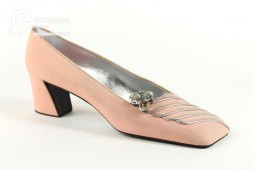
Among the most innovative fashion designers with whom Roger Vivier worked, his ten-year collaboration with Christian Dior can be considered as a golden era for shoe design, highlighting the importance of ‘dressing’ the ankle and foot to create a look.

Black pumps, Roger Vivier for Christian Dior, 1955, Courtesy Les Arts Décoratifs, Paris, All Rights Reserved
Born in Paris in 1913, Roger Vivier studied sculpture at the Ecole des Beaux Arts in Paris, until he interrupted his studies to design a collection for a shoe factory. This first appointment opened his eyes on his true vocation, shoe design, which led him to work for many major shoe manufacturers in Paris, UK and USA. In the early days of his career, his talent was especially appreciated by Elsa Schiaparelli, who included his designs in her 1938 collection.

Red pumps, Roger Vivier for Christian Dior, 1955, Courtesy Les Arts Décoratifs, Paris, All Rights Reserved
Back from WWII, Roger Vivier was working freelance in Paris, when Christian Dior opened a shoe department in his salon. In 1953 Monsieur Dior appointed Vivier as designer of the department. From 1953 to 1963 Roger Vivier designed all the shoe collections of Christian Dior, reaching the impressive result of creations with an avant-garde look destined to become classics. Inspired by the history of fashion and looking at the innovations in disciplines of engineering and science, he created a number of new heel shapes and designed some of the most iconic shoes of the period. The designs were lavish and adorned with unique jewels decorations, revealing a sophisticated eye for line, form and decoration.
The most relevant innovation introduced by Roger Vivier for Dior was probably the stiletto heel, obtained by increasing the height of the heel from 6 to 8 cm. The stiletto was first presented within the 1954 collection. In 1957 Christian Dior died and Vivier began collaborating with his successor Yves Saint Laurent. This collaboration produced the new square-point toe box, appeared on the pages of Vogue in 1958, where it was described as “one of the Paris details that may make fashion history.” In 1959 Vivier introduced the inward-curving schock-heel and in 1960 he was honoured with the Neiman-Marcus Fashion Award, after launching a streamlined update of the nineteenth-century d’Orsay pump, which is probably one of the most copied footwear styles ever.
Roger Vivier’s shoes may looked shocking at first, but had definitely redefined the contemporary notions of shoe design, captivating some of the most stylish and prestigious people, who became affectionate ambassadors of his style. Amongst them: Queen Elizabeth II, who wore a pair of gold kidskin studded shoes for her coronation ceremony in 1953; Marlene Dietrich, for whom Vivier designed a pair embellished with Boules; Ava Gardner, who in 1961 wore bright green highly polished cabochon and rhinestones created especially for her.








